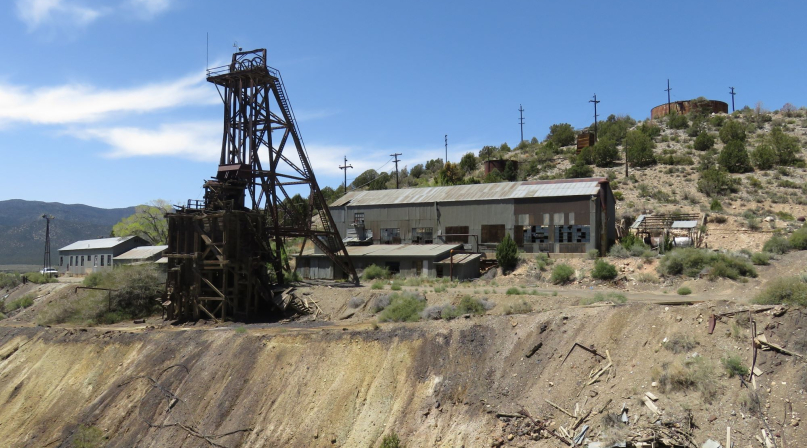This land is mine land: Reclaiming and repurposing left-behind equipment and grounds

Key Takeaways
Counties historically reliant on the coal industry from across the country are repurposing mine land and industrial assets from the coal industry for new economic opportunities. When mining companies or coal-fired power plants depart from a community, they often leave behind vacant administrative buildings, rail systems, loading docks or even major utility facilities.
Counties and partnering economic development organizations are taking a closer look at these sites, whether they are an empty plat of land or an equipped industrial site. They are turning remaining artifacts into strategic building blocks for future projects.
Floyd County, Ky. is more than familiar with left-behind mine land. Home to more historic company-owned coal towns than any county in Eastern Kentucky, Floyd County has thousands of acres of land and abandoned coal assets waiting to be repurposed and reused.
After completing NACo’s BRECC Action Challenge, NACo’s technical assistance program — resulting in community-driven economic diversification plans for team participants — Floyd County secured a $100,000 award from the U.S. Department of Energy’s Capacity Building for Repurposing Energy Assets program.
As part of its participation, the team also developed the Floyd County Coal Asset Map, which is an interactive online tool that helps local officials, planners and investors understand how to reuse and reimagine more than 24 former coal-mining sites for modern development.
The county partnered with BitSource, an eastern Kentucky-based software firm launched to retrain laid-off coal miners as coders. BitSource applied its technical skills and deep regional knowledge to build a custom map that integrates Geographic Information Systems into a user-friendly website that showcases site characteristics, infrastructure proximity (like rail and electric substations) and potential reuse scenarios. Map users can explore site suitability for such new projects such as industrial redevelopment, solar energy siting, tourism and flood-protected housing.
Floyd County maps potential sites for new community assets, like a Resilience Hub that will provide essential services and resources during emergencies and higher-ground neighborhoods that can withstand future flooding events. This initiative not only reclaims land — it reclaims opportunity. With leadership from local government, support from federal programs and the ingenuity of a tech company born from the coalfields, Floyd County is turning its coal past into a digital blueprint for the future.
Wise County, Va. also leverages reclaimed mine land for economic development opportunities, including commercial and utility-scale solar projects and industrial sites for target industries. Wise County is home to the first commercial-scale solar development on abandoned mine land in Virginia, which members of the BRECC Coalition had the chance to tour. The Mineral Gap Solar Array is a 20-acre, 3.46-megawatt solar development on reclaimed mine land that provides behind-the-meter power to the Mineral Gap Data Center, a 65,000 -square-foot Tier III co-location facility located on an adjacent site to the region’s shared business and technology park.
To accomplish this project, Wise County took the following key steps. The county conducted feasibility and site studies for renewable energy project potential. Then, the county leveraged funding from the federal Abandoned Mine Land Economic Revitalization program for site preparation. It also established partnerships with key stakeholders.
The county partnered with solar developer Sun Tribe to lead engineering, site prep and construction. It coordinated with the local electric utility to interconnect with existing service. And it cultivated a public-private partnership with a data center via a public land lease arrangement. The county’s successful development of its solar-powered data center and industrial park has encouraged the surrounding community to lean into their energy-producing identity. Wise County’s economic development team is conducting studies on other former mine land for additional energy opportunities, including solar, geothermal and small modular nuclear.
Beyond mine land, coal-impacted counties are redeveloping industrial real estate. Webster County, Ky. partnered with Madisonville Community College to retrofit a former mining company administration building into an educational campus. The county and college used funding from the Delta Regional Authority, a HUD Community Development Block Grant and the Kentucky Local Government Economic Development fund that uses coal severance tax revenue. Together, they transformed the administrative building into classrooms and a workforce development center for utility linesmen and commercial driver’s licenses.
Counties are also supporting efforts to repurpose retiring coal-fired power plants. A retired coal-fired power plant in Coconino County, Ariz. is now the manufacturing site for modular style homes. The modular home manufacturer, ZenniHome, retrofitted the power plant’s interior into a manufacturing line and product show room; it also uses recycled steel from part of the plant’s demolition for the construction of the modular homes.
Several other counties are also repurposing power plants for other energy production. Pike County, Ind. is being converted to a natural gas power plant. Lincoln County, Wyo.’s coal-fired power plant is being converted to a small modular nuclear plant. A Sherburne County, Minn. coal-fired power plant is being used for energy storage.
There is no doubt that coal communities are getting resourceful and creative when it comes to repurposing prior assets. In rural and remote communities, the coal industry has left behind valuable infrastructure that counties are putting to practical use. Whether it is built-out sites for new industry, transmission connections for alternative energy or historic artifacts to attract new tourism, coal-impacted counties are leading the way in pursuing productive futures for their industrial footprints.
Related News

U.S. House of Representatives passes SPEED Act and other permitting reform bills
On December 18, the U.S. House of Representatives passed the SPEED Act (H.R. 4776). The SPEED Act would strengthen county involvement in decision-making and make needed commonsense reforms to the federal environmental review process.

House Natural Resources Committee advances the Endangered Species Act Amendments Act of 2025
On December 17, the House Natural Resources Committee advanced the Endangered Species Act (ESA) Amendments Act of 2025 (H.R. 1897). The version passed by the committee adopted several changes from the initial bill and would address key county concerns by improving the implementation of the ESA. The legislation now awaits a floor vote before the whole U.S. House of Representatives.

Senators introduce bipartisan UPGRADE Act to support small and rural public water systems
On December 15, Sens. Lisa Blunt Rochester (D-Del.) and Roger Wicker (R-Miss.) introduced the Unincorporated Partnerships for Grant Resources, Assistance, and Drinking Water Enhancements (UPGRADE) Act (S. 3465), a bipartisan bill that would strengthen federal support for small public water systems and helps unincorporated communities access clean and affordable water.
